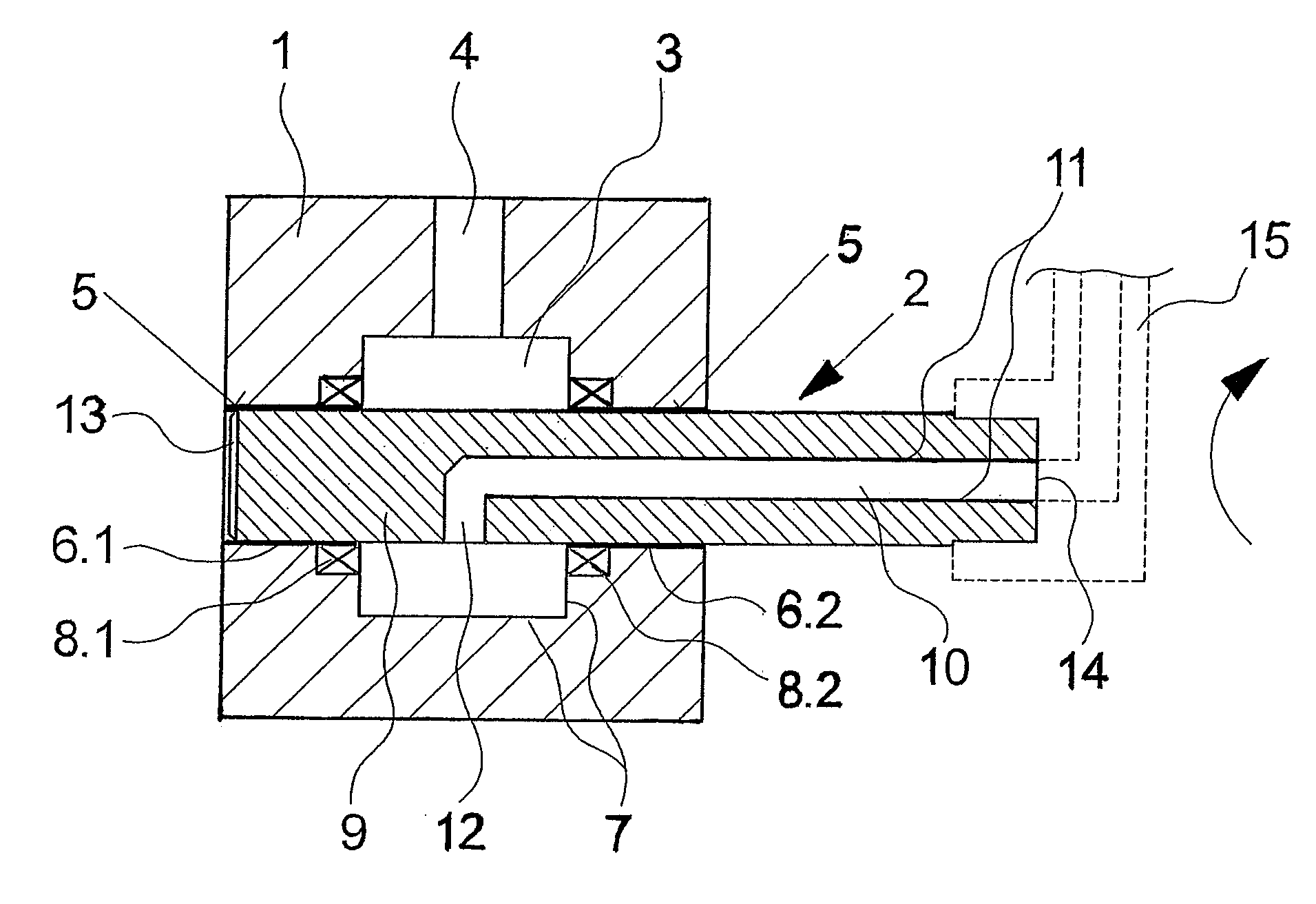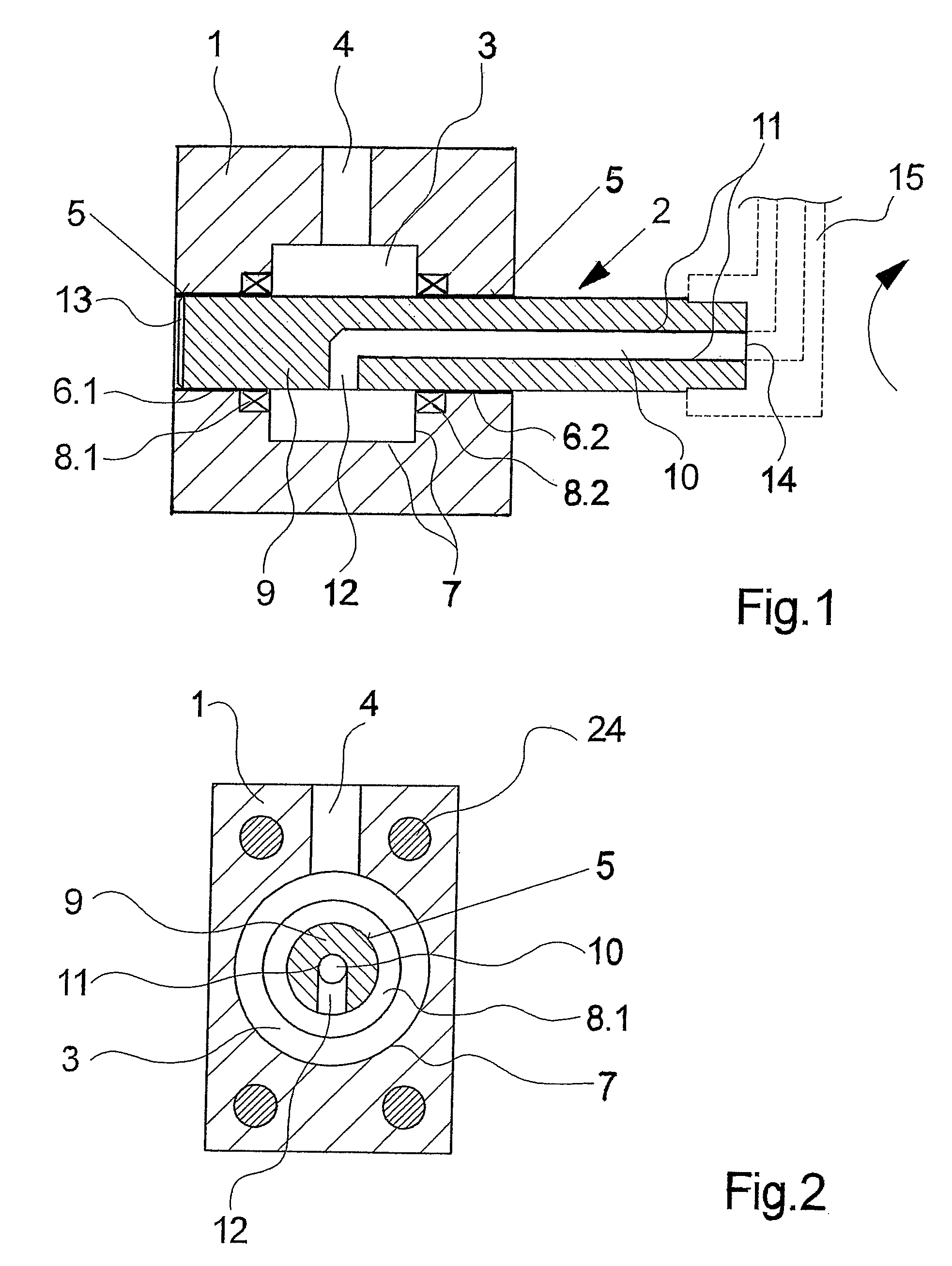Tubular rotary joint
a rotary joint and tube technology, applied in the direction of branching pipes, rigid supports of bearing units, mechanical equipment, etc., can solve the problems of high radial and axial forces, high pressure also arises when conducting polymer melts, and cannot be taken up by slide bearings
- Summary
- Abstract
- Description
- Claims
- Application Information
AI Technical Summary
Benefits of technology
Problems solved by technology
Method used
Image
Examples
Embodiment Construction
[0024]FIGS. 1 and 2 show different views of a first exemplary embodiment of a tubular rotary joint. FIG. 1 shows a longitudinal view of the exemplary embodiment, and
[0025]FIG. 2 shows a cross-sectional view thereof. The following description shall apply to both the figures unless there is explicit reference made to either of the figures.
[0026]The tubular rotary joint comprises a cuboid holder 1. In the holder 1, a distribution chamber 3 is formed, which is connected to a feeder 4. The feeder 4 is designed at the upper side of the holder 1, and is connected to a pipe section, which is not shown here.
[0027]In the holder 1 a bearing bore 5, which is directed transversely to the feeder 4, is formed in the middle region of the holder 1. The bearing bore 5 penetrates the distribution chamber 3 and the adjoining sidewalls of the holder 1. The distribution chamber 3 is formed by means of a circumferential groove 7 substantially concentrically to the bearing bore 5 within the holder 1. A con...
PUM
 Login to View More
Login to View More Abstract
Description
Claims
Application Information
 Login to View More
Login to View More - R&D
- Intellectual Property
- Life Sciences
- Materials
- Tech Scout
- Unparalleled Data Quality
- Higher Quality Content
- 60% Fewer Hallucinations
Browse by: Latest US Patents, China's latest patents, Technical Efficacy Thesaurus, Application Domain, Technology Topic, Popular Technical Reports.
© 2025 PatSnap. All rights reserved.Legal|Privacy policy|Modern Slavery Act Transparency Statement|Sitemap|About US| Contact US: help@patsnap.com



